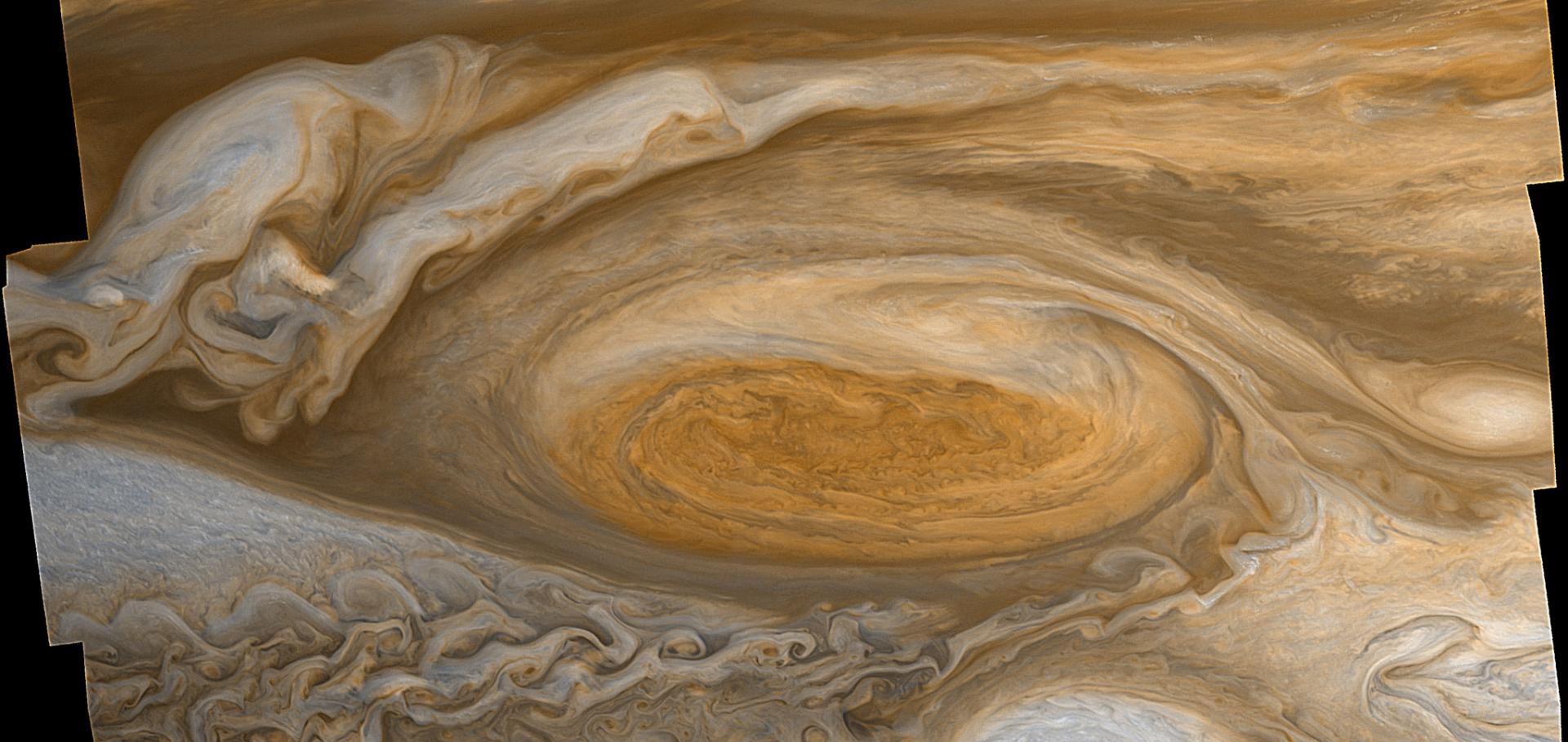Dynamics of Jupiter's atmosphere
Chapter in Jupiter, Cambridge Univ Pr (2004) 105-128
Abstract:
Banded structure: belts and zones, changes in zonal velocity, evidence of upwelling and downwelling; Dicrete features: great red spot, white ovals and other anticyclones, cyclonic features, eddy momentum flux; Temperatures and vertical structure: global temperature variations, thermal waves, vertical structure - winds, temperature; Moist convection and lightning: lightning distribution, convective heat flux and structure of the lightning clouds, energy of lightning flashes, depth of lightning, models of moist convection; Models of the zonal jets: banding controlled in the weather layer, deep winds and stability of the jets, banding controlled in the interior, modes of internal heat transfer, banding controlled by tides, equatorial superrotation; Models of discrete features: stabel vortices, statistical mechanics models, equatorial hot spots and the Galileo probe; Unanswered questions and possible solutions.Jupiter's and Saturn's convectively driven banded jets in the laboratory
Geophysical Research Letters 31 (2004) L22701 5pp
Investigating atmospheric predictability on Mars using breeding vectors in a general-circulation model
Quarterly Journal of the Royal Meteorological Society 130:603 PART B (2004) 2971-2989
Abstract:
A breeding vectors approach is used to investigate the hypothesis that the Martian atmosphere is predictable at certain times of year, by identifying the fastest-growing modes of instability ar different times in a Mars general-circulation model. Results indicate that the period from northern mid-spring until mid-autumn is remarkably predictable, with negative global growth rates for a range of conditions, in contrast to the situation on the earth. From northern late autumn to early spring growing modes do occur, peaking in northern high latitudes and near winter solstice. Reducing the size of the initial perturbations increases global growth rates in most cases, supporting the idea that instabilities which saturate nonlinearly at lower amplitudes have generally faster growth rates. In late autumn/early winter the fastest-growing modes ('bred vectors') are around the north pole, increase with dust loading, and probably grow via barotropic as well as baroclinic energy conversion. In northern late winter/early spring the bred vectors are around the north pole and are strongly baroclinic in nature. As dust loading (and with it the global circulation strength) is increased their growth rates first decrease, as the baroclinic mode is suppressed, then increase again as the fastest-growing instabilities switch to being those which dominated earlier in the year. If dust levels are very low during late northern autumn (late southern spring) then baroclinic modes are also found around the spring pole in the south, though for a slight increase in dust loading the dominant modes shift back to northern high latitudes. The bred vectors are also used as perturbations to the initial conditions for ensemble simulations. One possible application within the Mars model is as a means of identifying regions and times when dust-lifting activity (related to surface wind stress) might show significant interannual variability for a given model configuration, without the need to perform long, computationally expensive multi-year model runs with each new set-up. This is tested for a time of year when previous multi-year experiments showed significant variability in dust storm onset in the region north of Chryse. Despite the model having no feedbacks between dust lifting and atmospheric state (unlike the original multi-year mn), the ensemble members still show maximum divergence in this region in terms of near-surface wind stress, suggesting both that this application deserves further testing, and that the intrinsic atmospheric variability alone may be important in producing interannual variability in this storm type. © Royal Meteorological Society, 2004.Jupiter's atmospheric composition from the Cassini thermal infrared spectroscopy experiment.
Science 305:5690 (2004) 1582-1586
Abstract:
The Composite Infrared Spectrometer observed Jupiter in the thermal infrared during the swing-by of the Cassini spacecraft. Results include the detection of two new stratospheric species, the methyl radical and diacetylene, gaseous species present in the north and south auroral infrared hot spots; determination of the variations with latitude of acetylene and ethane, the latter a tracer of atmospheric motion; observations of unexpected spatial distributions of carbon dioxide and hydrogen cyanide, both considered to be products of comet Shoemaker-Levy 9 impacts; characterization of the morphology of the auroral infrared hot spot acetylene emission; and a new evaluation of the energetics of the northern auroral infrared hot spot.The Trans-Hellas crossing - An exercise in Martian expedition planning
Science and Technology Series 107 (2004) 199-207


